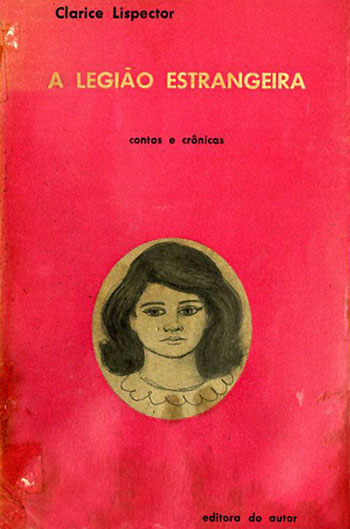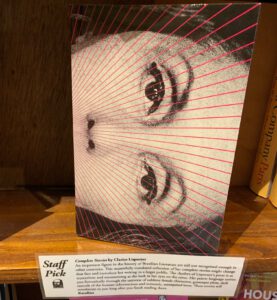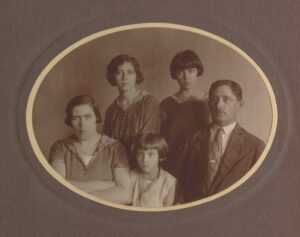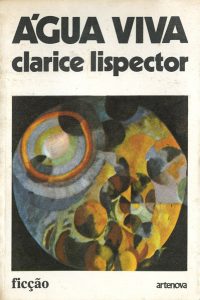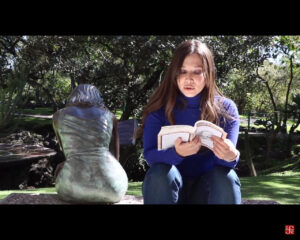, What Lies Clarice Has. IMS Clarice Lispector, 2014. Disponível em: https://site.claricelispector.ims.com.br/en/2014/06/10/que-mentiras-tem-clarice/. Acesso em: 07 January 2026.
What I write about myself is never the last word
Roland Barthes
I.
It is not easy to talk about Clarice Lispector, an author who has broad repercussions. In the times of social networks, Clarice “cultivates” thousands and thousands of “followers,” “apps,” and “pages.” In the editorial context, the numbers are quite high. Her 22 titles published during her lifetime, among them novels, stories, and chronicles, have given rise to almost 210 translations and more than 500 publications, including theses, dissertations, and books dedicated to the life and work of the author.
Clarice’s numbers reveal that her texts do not respect geographical, cultural, or spatial-temporal boundaries, and remain very much alive by means of translations and reissues, even 40 years after the death of the author.
II.
However, Clarice Lispector’s international literary fame may bring some distorted modes of interpretation. Much of her production is taken only as a self-writing, drenched in personality, in biographical traits. A way of reading that foresees a mirroring of Clarice’s life and work may not be a fruitful option. As Roland Barthes affirms: “The more ‘sincere’ I am, the more interpretable I am, under the eye of other examples than those of the old authors, who believed they were required to submit themselves to but one law: authenticity” (BARTHES, 1997, p. 120).
In the case of Clarice Lispector, despite the fact that, yes, the writing is introspective and subjective in character, the reader is responsible for feeling the literature in the “gut.” That is, the almost “soul” identification between the reader and Clarice has more to do with the reader’s intention, his or her interpretation, than with the intention of the author’s writing. To unite, indistinctly, the pair author-individual is an interpretive operation – one which is certainly not a big problem. However, this operation can weaken the power of the text when it stops being one mode, one operation, and becomes the mode, the interpretation. There is no doubt that information about an author’s biography sheds light upon the writing, both are in contact, but it cannot be the only light to guide the path of the reader through the text.
To think of the self on the razor’s edge, in a biographical illusion, in a death of the author (to give life to fiction), can constitute very rich spaces for reading.
III.
The mythification on the part of the readers may have been constructed, in part, by Clarice herself. Throughout her life, some “slips” were made. I use the term “lie” not in a Manichaean or biblical sense, but as a jesting way to classify Clarice Lispector’s statements that at some point – and on some level – may have contradicted the facts. Mistakes of a biographical and bibliographical nature, due to a memory slip or due to distraction. Before attributing to “liar” negative epithets, it is good to recall what Nietzsche conceptualizes as truth in the famous essay “On Truth and Lies in an Extramoral Sense:”
[Truth] is a mobile army of metaphors, metonyms, and anthropomorphisms—in short, a sum of human relations which have been enhanced, transposed and embellished poetically and rhetorically, and which after long use seem firm, canonical, and obligatory to a people: truths are illusions about which one has forgotten that this is what they are, metaphors which are worn out and without sensuous power; (…). (NIETZSCHE, 1873)
The definition is quite inspiring if we think of metaphor as an eminently literary device; we would therefore all be poetic, creating and recreating the word. Neither lies, nor truth: metaphors. In this sense, we bring forth some lies (metaphors) told by Clarice that have been calcified in order to think of the relevance they bring to her oeuvre.
IV.
I’m totally Brazilian, the fact that i was born in Russia means nothing. I was two months old when I came to Brazil and my first language was Portuguese. (LISPECTOR apud ROCHA, 2011, p.50)
My homeland did not leave a mark on me, except for my genetic heritage. I’ve never set foot in Russia. (LISPECTOR apud IMS, op. cit., p. 59)
Clarice Lispector declared that she was two months old when she arrived in Brazil. Yet biographical history shows that the Lispectors landed in the city of Maceió in 1922, thus a simple accounting would show that Clarice was almost two years old. Would this reduction in age be an attempt to reduce her memories to the minimum possible? As if she could deny, could forget the various situations that her family had to go through en route from Ukraine to Brazil: robberies, epidemics, hunger.
In fact, the tension with her country of origin would be a glaring theme in her interviews. The condition of being Brazilian was irrevocable. Upon being asked if she would ever leave Brazil, she is emphatic: “Never, but I’ve never even considered this possibility.” The Portuguese critic Carlos Mendes de Sousa considers the author as “the first and most radical affirmation of a non-place in Brazilian literature.” And here is the non-place of her writings: the novelty of a deterritorializing literature in the midst of her contemporaries who turned to Minas Gerais, Rio de Janeiro, and to the northeastern backlands. I quote Lêdo Ivo:
There will certainly be no tangible and acceptable explanation for the mystery of Clarice Lispector’s language and style. The foreignness of her prose is one of the most compelling pieces of evidence in our literary history and, moreover, of the history of our language. This borderline prose, emigrating and immigrating, does not resound with any of our illustrious predecessors […]. One could say that she, a naturalized Brazilian, naturalized a language. (IVO apud IMS, 2004, p. 48)
Carlos Drummond de Andrade also recorded in the poem “Visions of Clarice Lispector,” published in Discurso da primavera & Algumas sombras (Discourse of Spring & Some Shadows, 1977), this non-place of Clarice in verse:
Within her
the ballrooms, stairways
phosphorescent roofs, long steppes,
lantern towers, bridges of Recife shrouded in fog,
formed a country, the country where Clarice
lived alone and ardent, building tales.
The reference to the non-place can also be considered in relation to her life: born en route, she spent her childhood in Recife, and her youth in Rio de Janeiro, she married a diplomat, she lived in several countries, and finally, she returned to Rio and settled in the neighborhood of Leme.
Another controversial point that has not been very well clarified is not related to language, but to speech. During the Ukraine-Brazil voyage, the youngest Lispector had contact with several language: Yiddish, Russian, English, and finally, Portuguese. Current language acquisition and processing studies affirm that, until seven months of age, babies are able to assimilate the specific sounds of their language and internalize them, even though they cannot reproduce them. Those who have not only read, but also heard Clarice, remember her speech. A speech so undefinable that it is not a surprise. Might the internalization of these sounds mean her “tongue is tied,” as Clarice would say, a remnant of her contact with these different languages? The oldest sister, Elisa Lispector, said that at the house in Recife everyone spoke Yiddish.
My first language was Portuguese. Do I speak Russian: No, absolutely not. (…) my tongue is tied. (…) some people used to ask me if I was French, due to my accent. (LISPECTOR, 2005, p. 95)
Another slip is about her city of birth, Chechelnik. The Brazilian literature professor Nádia Battella Gotlib said she took Clarice’s statement literally and reproduced it several times in her classes: “I was born in the Ukraine, the land of my parents. I was born in a village named Tchechelnik, which is not on the map because it is so small and insignificant.” 1 Until a student brought in a map of Ukraine proving the existence of said village. This would highlight an aspect already mentioned about Clarice’s reluctance to associate her image with a pre-Brazil period. In the aforementioned excerpt, let us note the “land of my parents,” reiterating, once again, her integral Brazilianness.
(Warning: how might the investigation of lies – metaphors – enrich the reading of Clarice’s work?)
V.
Leaving aside the more biographical news, we will analyze the untruths about her production.
In an interview with Affonso Romano de Sant’Anna and Marina Colasanti for the Museum of Image and Sound on October 20, 1976, Clarice Lispector states:
Affonso – You have your texts written in your head. And once you told me something that impressed me: you never reread your texts.
Clarice – No. I get sick of them. When it’s published, it’s like a dead book. I don’t want to deal with it anymore. And when I read it, it’s strange, I think it’s bad. So, I don’t read it! (LISPECTOR apud ROCHA, op. cit., p. 142)
In the Preface to the edition of The Passion According to G.H. published by Rocco, Marlene Gomes Mendes cites Olga Borelli, “Clarice Lispector’s great friend and companion (…) assured us that, in fact, Clarice did not look again at her texts after sending the originals to the publisher.” Clarice: “Sometimes I don’t even correct the proofs. I ask someone to read them. Finished things don’t interest me anymore.”The copy of The Foreign Legion (1964) from the personal library of Clarice Lispector at the Moreira Salles Institute, with notes made by the author herself, proves otherwise. In it she made changes to the punctuation, substituted a word here or there, and highlighted what had already been published in the Jornal do Brasil. This copy is the embryo of the book that would come in 1971, Covert Joy. The change of title is already indicated on the title page of the 1964 copy. The titles of the stories were also rethought; however, in the following volume only two would undergo modifications: “Evolution of a Myopia” to “Progressive Myopia” / “Sketching a little boy” to “Pen Drawing of a Little Boy.” On one page there are marks made with pens of different colors, which may indicate that the review was the result of readings at various moments. The shaky, insecure handwriting indicates that the revision was made after the fire in September 1966, which seriously compromised the movements of Clarice’s right hand. There was never a second edition of The Foreign Legion, which further accentuates the rarity of the copy catalogued on the IMS site and available for consultation.
Lastly, let us talk about Clarice Lispector’s activity as a columnist, an author of crônicas. Alongside contemporaries such as Rachel de Queiroz, Paulo Mendes Campos, Otto Lara Resende, and Carlos Drummond de Andrade, authors who felt at ease in the genre, and who today are her neighbors in the archive, Clarice, on the contrary, felt great discomfort in the profession, for three reasons that we will point out below.
Although she denied the title of columnist, Clarice wrote for the newspapers Comício, Correio da Manhã, Diário da Noite, and the renowned Jornal do Brasil, where she appeared weekly for six years, accounting for nearly 300 crônicas published, with a range of subjects from those related to meta-writing to critical analysis, translations, and short fictional passages that would be used in her novels and stories. To the 300 texts for the Jornal do Brasil, we add the 450 chronicles published in other newspapers. Her productivity, and, above all, good reception from the public are two signs that make us recognize the columnist Clarice revealed herself to be. We can identify at least two phases of her performance for the press.
The first would be composed of three newspapers united by the same theme. Clarice wrote for Comício (a weekly, anti-Getúlio Vargas newspaper founded by, among others, Rubem Braga), under the pseudonym Tereza Quadros, the column “Entre mulheres” (Among Women); for the Diário da Noite, as a ghost-writer for the actress Ilka Soares, the column “Só para mulheres” [Only for Women]; and for the Correio da Manhã, as Helen Palmer, the column “Correio feminino” (Women’s Mail). It is no secret that she agreed to write about “pleasantries” to bolster the family income. When she participated in the latter two newspapers, she was a mother of two children and recently separated from the diplomat Maury Gurgel Valente, with whom she ended a marriage of more than ten years. In an interview with TV Cultura (1977), Clarice stated: “I’m not a professional, I only write when I want to. I’m an amateur and I insist on continuing to be an amateur. A professional is one who has an obligation to herself to write. Or else to another, in relation to another. Now I make a point of not being professional to maintain my freedom.” From the statement, it is understood that her position as the author of the women’s columns has little to do with Clarice, writer of novels and stories.
Professionalism takes away her freedom; it is not the author delivered to her creation. It is the paycheck. “Having to” write “for” are two reasons for her discomfort in the profession.² Writing chronicles for the female public was not in the cards. The use of pseudonyms was a way of safeguarding the author of the novels Near to the Wild Heart and The Chandelier, already published at the time. Protecting her, in truth, from a pedestrian and frugal-themed column.
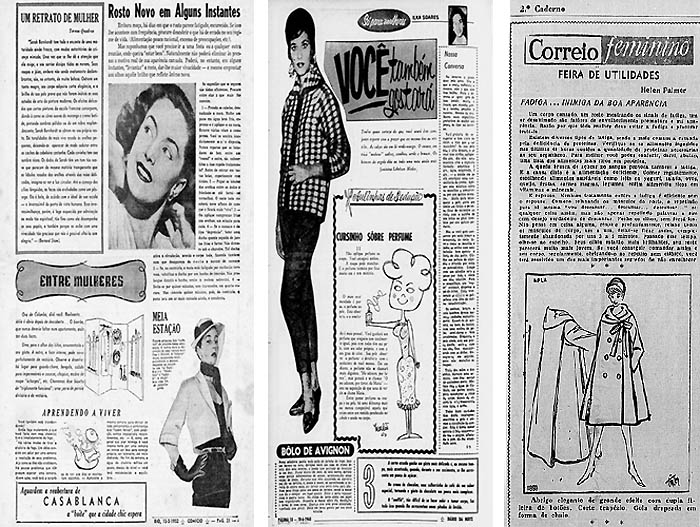
I still feel a little uncomfortable in my new role which cannot be strictly described as that of a columnist. And besides being a novice in the art of writing chronicles, I am also a novice when it comes to writing in order to earn money. I have had some experience as a professional journalist without ever signing my contributions. By signing my name I automatically become more personal. (LISPECTOR apud IMS, op. cit., p. 64)
In her personal library there are some titles of feminine topics. We will cite three: A arte de beber e recepcionar (The Art of Drinking and Hosting), Personal Beauty and Charm and Beleza e personalidade –O livro azul da mulher (Beauty and Personality: The Woman’s Blue Book). In a search, we found several tips adapted from these books that were published in the columns in which she worked. Material that proves the professionalism with which she treated the pages of “pleasantries.” Work. Limited creation. The books cited could be sources for Clarice the columnist to guide wives, mothers, and homemakers, together with her experience as ex-wife of a diplomat and mother of two children; in addition to her natural female authority in women’s matters.
The second moment of her activity as a columnist, now no longer for the female public, is during her time at the Jornal do Brasil. There, Clarice Lispector points out the third reason for not recognizing herself as a columnist: the risk of personal exposure, of the self on the razor’s edge. Since there was no specific theme geared to a specific public, as in her previous experience, in other words, there was a certain liberty, the writer confesses a fear of exposing in her writings her “past and present” life. It is clear in the following quote, once again, the distinction she imposes on the two worlds, the private and the public, the crônica and the novel, the reader of newspapers and the reader of her works:
As I write here, I’m becoming too personal, running the risk of soon publishing my past and present life, which I do not intend. Another thing I’ve noted: it’s enough for me to know I’m writing for a newspaper, that is, for something easily opened by everyone, and not for a book, which is only opened by someone who really wants to, so that, without even feeling it, my way of writing is transformed. It’s not that I don’t like changing, on the contrary. (…) But to change just because this is a column or a chronicle? To be “lighter” just because the reader wants me to? To have fun? To pass a few minutes of reading? And another thing: in my books I deeply want to communicate with myself and with the reader. Here in the newspaper I only speak to the reader and I’m pleased that he is pleased. I’ll tell you the truth: I’m not happy. And I really think I’m going to have a conversation with Rubem Braga because by myself I’ve been unable to understand. (LISPECTOR apud IMS, op. cit., p.65)
For the sake of clarity, Rubem Braga is cited because it was upon his invitation that Clarice started writing a column for Comício. If Clarice were not an author of crônicas it would not be Rubem Braga, a renowned author in the genre, whom Clarice herself called the “inventor of the crônica,” who would recognize in the author of important novels of Brazilian literature an excellent writer of crônicas.
VI.
In 1953, the possibility arose for Clarice to sign a new column for the magazine Manchete. She confesses to her friend Fernando Sabino just how uncomfortable this experience could be, as she would have the impression of being present in person, “probably stuttering from embarrassment.” She would probably be stuttering from embarrassment today if she knew that her biography is practically superimposed on her work.
Having seen all this, I find it pleasurable to observe in her a behavior for which the reliability of information does not always matter, in which reality and fantasy/biography and fiction intersect. Information on her origins, age, language, past: truth is a metaphor. It is all boundary, it is all a non-place. What Clarice Lispector published has to do with the “health of literature” that Gilles Deleuze refers to in “Literature and Life:” literature as an invention of a missing people; literature is not fables written with memories – unless they become the collective origin or destiny of these people.
In order to think about the modes of reading that can overinterpret literature and exceed the game of fiction it prescribes, I will conclude with the Minas Gerais native, Paulo Mendes Campos: “Whoever doesn’t know that literature is made up of words hasn’t arrived there yet.”
References:
BARTHES, Roland. Roland Barthes by Roland Barthes. Trans. R. Howard. London, McMillan, 1977.
DELEUZE, Gilles. Essays Critical and Clinical. Trans. Daniel W. Smith and Michael A. Greco. London, Verso, 1998.
INSTITUTO MOREIRA SALLES, Cadernos de Literatura Brasileira: Clarice Lispector, ns 17 e 18. São Paulo: IMS, 2004. LISPECTOR, Clarice. Outros escritos. Rio de Janeiro: Rocco, 2005.
MOSER, Benjamin. Clarice. São Paulo: Cosac Naify, 2009.
NIETZSCHE, Friederich. “On Truth and Lies in an Extra-Moral Sense,” 1873. Essay available at: https://oregonstate.edu/instruct/phl201/modules/Philosophers/Nietzsche/Truth_and_Lie_in_an_Extra-Moral_Sense.htm
ROCHA, Evelyn, org. Clarice Lispector – Série Encontro. Rio de Janeiro: Azougue, 2011.
SOUSA, Carlos Mendes de. Clarice Lispector – Figuras da escrita. São Paulo: IMS, 2012.
…
1 In the months of February and March, 2012, the Moreira Salles Institute hosted the course “Clarice: An Apprenticeship,” with the participation of Benjamin Moser, Vilma Arêas, Carlos Mendes de Sousa, and Professor Nádia Battella Gotlib.
2 Recently, Globo Network made a series about Correio feminino (Women’s Mail) and, in an flawed manner (for the purposes of dissemination, perhaps?), they fell into the trap of mirroring Clarice as a writer and a woman, once again crossing the line between the individual and the author, attaching biography to literary work; in the case of the crônicas, attaching biography to the work performed.

